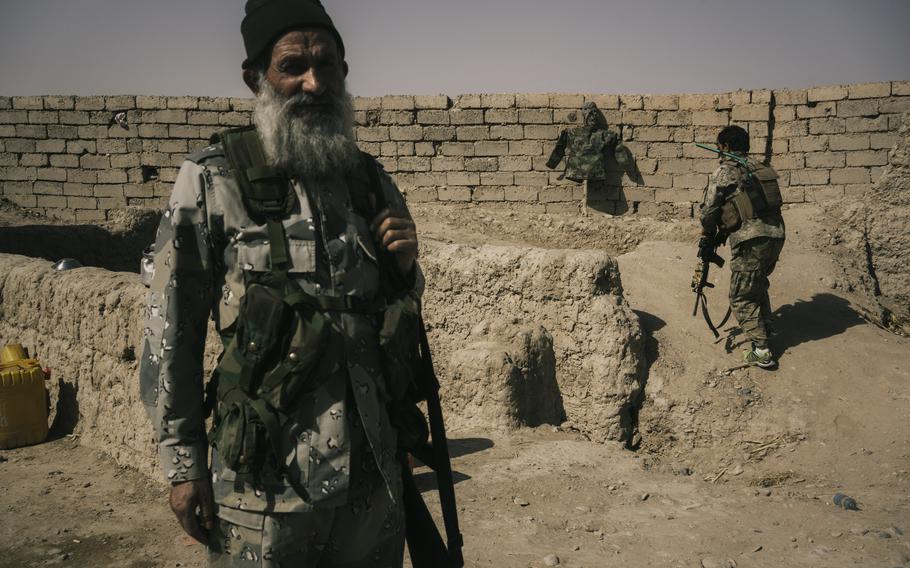KABUL, Afghanistan — Taliban fighters pushed into a key city in northern Afghanistan on Wednesday morning, the latest advance in a string of attacks that have wrested dozens of districts from government control since foreign forces began to withdraw in May.
Videos circulated by Taliban spokesmen showed cheering civilians on the outskirts of Qala-e Nau, the capital of Badghis province, as dozens of militants sped by on motorcycles. In a separate video released by the Afghan government, the province's governor — holding a rifle and wearing an ammunition vest — pledged to defend the city.
"The Taliban suffered casualties and were defeated," Hasamuddin Shams, the provincial governor, said in the video as explosions rumbled in the background. Clashes reached the city center Wednesday, but Afghan government officials said the city remains in government control.
"The situation in Badghis is not a concern. The city perimeter is completely defended," Ajmal Omar Shinwari, spokesman for Afghanistan's security forces, said at a news conference hours after the assault began.
The siege on Badghis comes as the Taliban has made rapid gains across Afghanistan, many in the face of little to no resistance, in the wake of the U.S. withdrawal. Without close U.S. support, specifically airstrikes, Afghan forces have been unable to hold territory even in parts of the country far from the Taliban's traditional heartland in the south.
"It was exactly like a dam breaking down," said Abdul Aziz Beg, a member of the Badghis provincial council who was in the city when the assault began.
Beg said the breach was triggered by the deputy police chief deserting his post. After he fled, the Afghan police staffing key checkpoints protecting Qala-e Nau abandoned their positions, he said, allowing Taliban fighters to easily enter the capital.
Shinwari, the security forces spokesman, said the commander's departure was planned, describing it as a "tactical retreat."
Like many of the other provinces where Taliban fighters have rolled back government troops, parts of Badghis have long been under militant control, with front lines remaining static for years. But after U.S. and NATO forces began the last phase of their withdrawal from Afghanistan in May, the Taliban has steadily expanded its reach.
The militants attacked several provinces south of Kabul where they had long held considerable influence. After consolidating gains there, the group's focus shifted to the north in recent weeks, where its influence is more recent.
Taliban fighters now control large portions of territory along Afghanistan's northern border with China, Tajikistan, Uzbekistan and Turkmenistan. On Monday, more than 1,000 Afghan soldiers fled into neighboring Tajikistan ahead of a Taliban advance in Badakhshan province.
Shinwari, the spokesman, acknowledged the severity of the country's situation, but said that Afghan security forces remain capable of retaking territory. He said government troops have retaken 14 districts in recent days, but did not specify which ones.
"We are in a very difficult moment, but we assure you that the security forces are ready to fight," he said.
The Washington Post's Aziz Tassal and Ezzatullah Mehrdad in Kabul contributed to this report.

Afghan army soldiers occupy a position on the front line that is exposed to Taliban sniper fire at the Nazar outpost near Lashkar Gah on May 25. (Lorenzo Tugnoli/For The Washington Post)